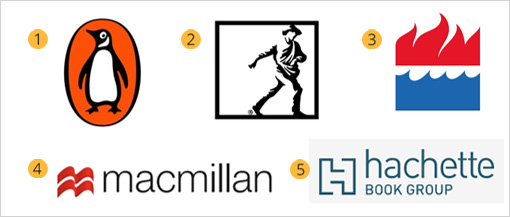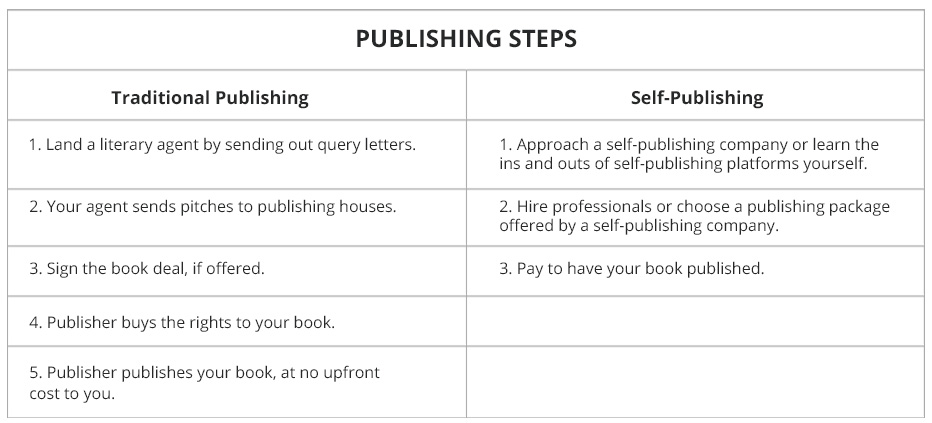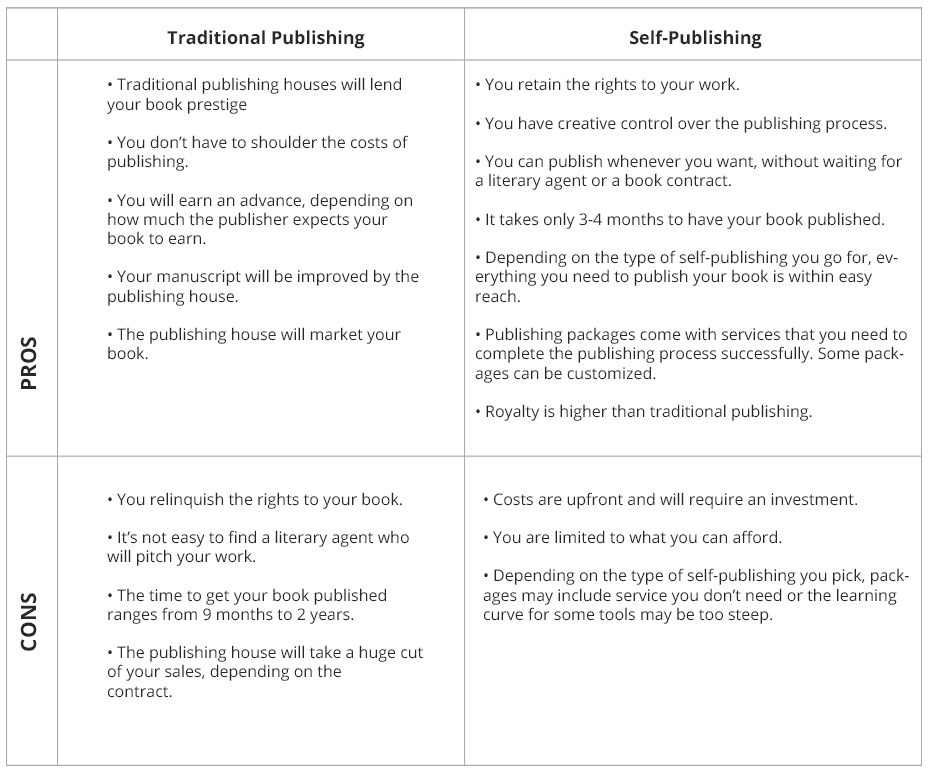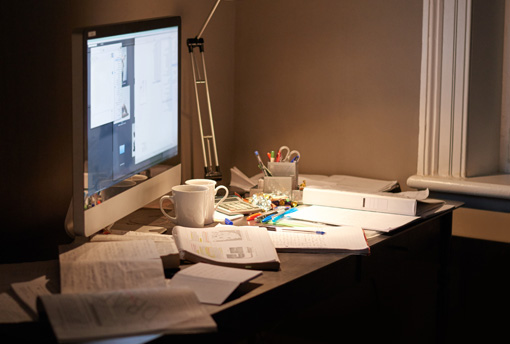Your publishing journey, made easy. Download our FREE Publishing Guide.
Self-Publishing 101:
Everything You Need to Know
to Publish Your Own Book
Whatever is worth doing at all, is worth doing well. And when it comes to self-publishing, these words could not be truer.
Publishing your won book is understandably one complicated and painstaking process. It involves more than just hacking away at your manuscript. It takes more than just sending your finished documents to a printer and waiting for the print-out in the mail. Making your book, becoming a published author is not a walk in the park. But it is worth doing and worth doing well. Especially when you self-publish.
What is Self-Publishing?
Self-publishing is the process of publishing media, by its author or creator, without the involvement of an established publishing company. Self-published materials range from written materials, such as books, brochures, pamphlets, or magazines, but it can also refer to other types of media. You can self-publish a video game, artwork, or music.
This guide will focus on how self-publishing your book works. It will answer the following questions you may have about how to self-publish a book, such as:
- What are the steps to self-publishing?
- How is it different from traditional publishing?
- What are the types of self-publishing?
- What kind of books can I self-publish?
- How much does self-publishing cost?
History of Self-Publishing
Self-publishing has been around since prehistoric times. The very first forms of written materials were technically self-published. In fact, doing it yourself was the norm, when one wanted to put out their written body of work, before the rise of the traditional publishing industry.
The timeline below showcases the materials and regions that ultimately led to the birth and rise of publishing and widespread adoption of self-publishing.
- Clays, Papyrus, Parchment, Other Non-Paper Materials
The first forms of self-published materials predate our current definition of what a book format is. The earliest types of “books” were clay tablets, scrolls, and sheets of papyrus.
Ancient Near East
Clary tablets were used in Sumer, Mesopotamia, Nineveh, and other regions in the Ancient Near East. Text carved on these clay tablets took many forms. They were used for keeping business and legal records. The text also came in the form of fables, myths, poetry, essays, and short stories.The Epic of Gilgamesh, the oldest piece of epic literature, was written on clay tablets.
Ancient Egypt
Papyrus books, in the form of scrolls, were 10 meters long or more. The books detailing the history of the reign of Ramses II were over 40 meters long.East Asia
In China, the first written texts were on bone, shells, wood, and silk. Printing of books was done by woodblock printing, a laborious method that involved carving wood.Greece & Rome The Romans used wooden tablets coated in wax to write their “books.” These tablets were used to make notes and accounting and teach writing to children.
Parchment is believed to have been invented in ancient Greece. It was made using the skins of animals and quickly replaced papyrus as a medium for writing.
Book production and the book business developed in Rome in the 1st century BC. It was also around this period when libraries were set up.
- Codex
By the middle ages, paper had become more widely used than papyrus as it was easier to produce. It was cheaper, too, when papermaking centers began to multiply in the 13th Century in Italy.
The book as we know it now emerged when the codex replaced the scroll after widespread adoption of paper.
Printing
The invention of the moveable type pushed book production to the industrial age. This led to the publication of books as an enterprise.
By 1875, the first literary agent began their business.
Modern Self-Publishing
In 1997, Lightning Source was founded. They contributed to the rise of print-on-demand self-publishing companies, including Xlibris.
Publishing is now an established industry, generating billions of dollars each year. The contribution of self-publishing to these numbers is not negligible. The statistics below show how self-publishing plays an important role in the industry:
- 30-34% of ebooks are self-published
- Each year, $1.25 billion worth of self-published books are sold
- Self-publishing increased 264% in the last several years
- The publishing market expects 1% growth per year but self-publishing expects a market growth rate of 17%
Books, whether electronic or printed, have become a staple of modern life. It’s not just kings, monasteries, or esteemed record-keepers who can own and collect books these days. Any home, in any town or city with a library or bookstore, has at least one book. Anyone with an internet connection can purchase a book, in any format, and have it delivered to their home or their electronic device.
This widespread accessibility has also shown that self-publishing is a viable and smarter method to getting your book published. It is certainly an option that you must take into full consideration, other than traditional publishing.
Self-Publishing vs Traditional Publishing
Traditional publishing, as the name suggests, is the widely accepted method to get published. Since the literary agents began their business in 1870, traditional publishing has been seen as the ultimate way to get published.
Some of the most popular traditional publishers are:

1. Hachette
2. HarperCollins
3. Macmillan
4. Penguin Random House
5. Simon & Schuster.
To understand this traditional publishing better and how it is different from self-publishing, let’s compare the steps involved in both methods:

The pros and cons below illustrate the differences between traditional publishing and self-publishing further.

Self-publishing, furthermore, falls into two types: true publishing and supported self-publishing.
Types of Self-Publishing

True Self-Publishing
True self-publishing is also called DIY publishing. This method involves taking both entrepreneurial and creative roles for publishing your book. Depending on your skills, this may mean doing the editing, formatting, design, and cover art for your book yourself. Another way to go about this is to hire freelancers who can handle aspects of the process where the author’s skills may fall short.


Supported Self-Publishing
Supported self-publishing involves working with a company that offers various publishing services aimed at helping you become a published author. These services range from editing, cover design, formatting, marketing, and more. A supported self-publishing company has in-house teams of experts who can assist you tackling all aspects of your books — from completing the manuscript to providing artwork to distributing your book.
Supported self-publishing houses offer their services in packages. These packages come in different price tiers. Some are customizable.

Which Publishing Method is Right For You?
One thing to note is that there is no single path to take when you want to get published. Depending on your time, resources, and publishing goals, you can go the traditional way or the self-publishing way. Or even both!
You can go the traditional way initially and then self-publish for your next book. Additionally, self-publishing your book does not lower your chances to get traditionally published. For many authors, self-publishing was a stepping stone that helped propel them into the radar of traditional publishers.
Let's go to Part 2

